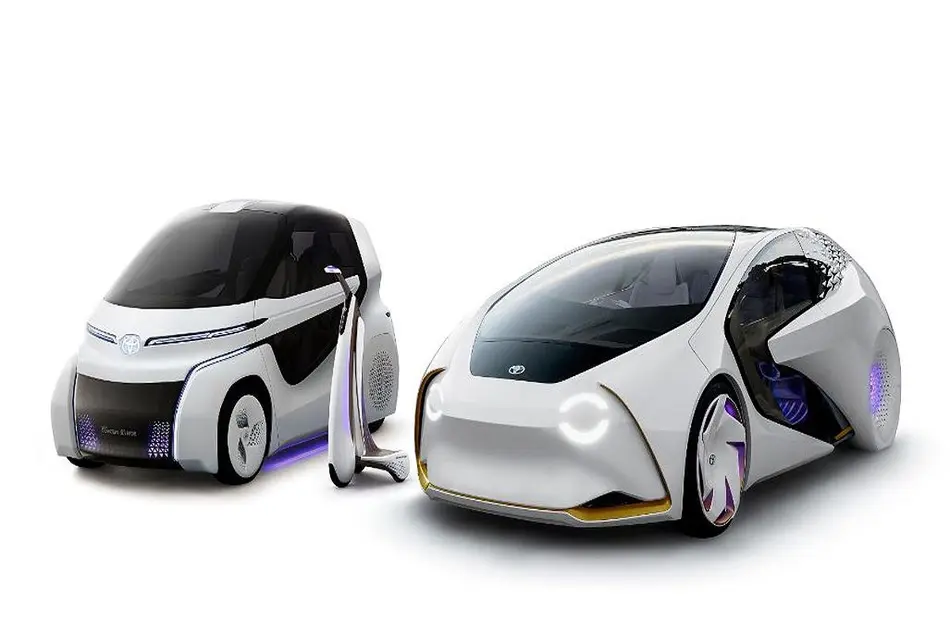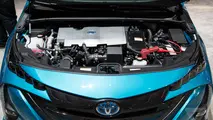Toyota Defines Future of Mobility with Concept Car "TOYOTA Concept-i" Series Debuting at Tokyo Motor Show 2017

The Concept i-Ride, on the far left, and the Concept i-Walk show at the CES in January a Concept-i-series, which with the original four-seat Concept-
TOKYO – Toyota plans to expand its vision of future mobility at the Tokyo Motor Show with two tiny electric runabouts that predict the driver's emotions and lead away from the danger.
At the CES fair in January, the Concept i-Ride and the Concept i-Walk showcased a Concept-i series, featuring the original four-seat Concept-
The Concept i-Ride is a two-wheeled pod car that is perfect for overcrowded streets in the city and is conceived as a means of personal mobility for the elderly or disabled. Its wing doors open wide to allow easy loading and unloading of wheelchairs and are powered by a joystick instead of pedals.
The Concept i-Walk is a three-wheeled Segway-like scooter on which the driver stands. Toyota looks to the trike to avoid pedestrian zones or sights.
Both concepts announced Monday in a preview of Toyotas Tokyo Motor Show plans, are battery powered and positioned as if they had driving potential.
The Concept-i Ride has a range between 62-93 miles, while the concept i-Walk is seen as a full charge of up to 12.4 miles.
The series name is a game about the Japanese word for love, which is pronounced as the letter i. It reflects the desire of Toyota Motor Corp. to position intelligent cars of tomorrow as a beloved partner with an emotional connection to the driver rather than as merely utilitarian devices.
Toyota has announced to test some of the concept-i technologies for autonomous driving and artificial intelligence on the home market by 2020.
The common thread is a system of artificial intelligence that grasps deep learning to absorb the habits and behavior of the rider, prepare predictions and suggestions, and protect the inmates.
By observing the eye movements, facial expressions and gestures of the driver, the cars aim, for example, to predict whether the driver is sleepy or irritated.
Current systems can detect fatigue or anger after the fact, but Toyota says it's too late. It wants a system that can predict the driver's condition beforehand.
For example, if the driver is annoyed by heavy traffic and starts bouncing, the computer may react by blowing and blowing the seat at a slow rhythmic pace.
This could slow down the driver's breathing and help reduce the lead.
Or when drivers get tired, the car will get in to keep them awake before falling asleep.
Toyota showed another video, in which the program of artificial intelligence felt how the driver became depressed. The computer then dived into its digital music memory banks to lift one of the driver's old favorite songs to cheer him up.
"The Toyota Concept i series," said Toyota in a press release, "wants to be a" beloved car "a new era, from the concept" more than a machine, a partner "and grow together with the driver as an irreplaceable partner. "



